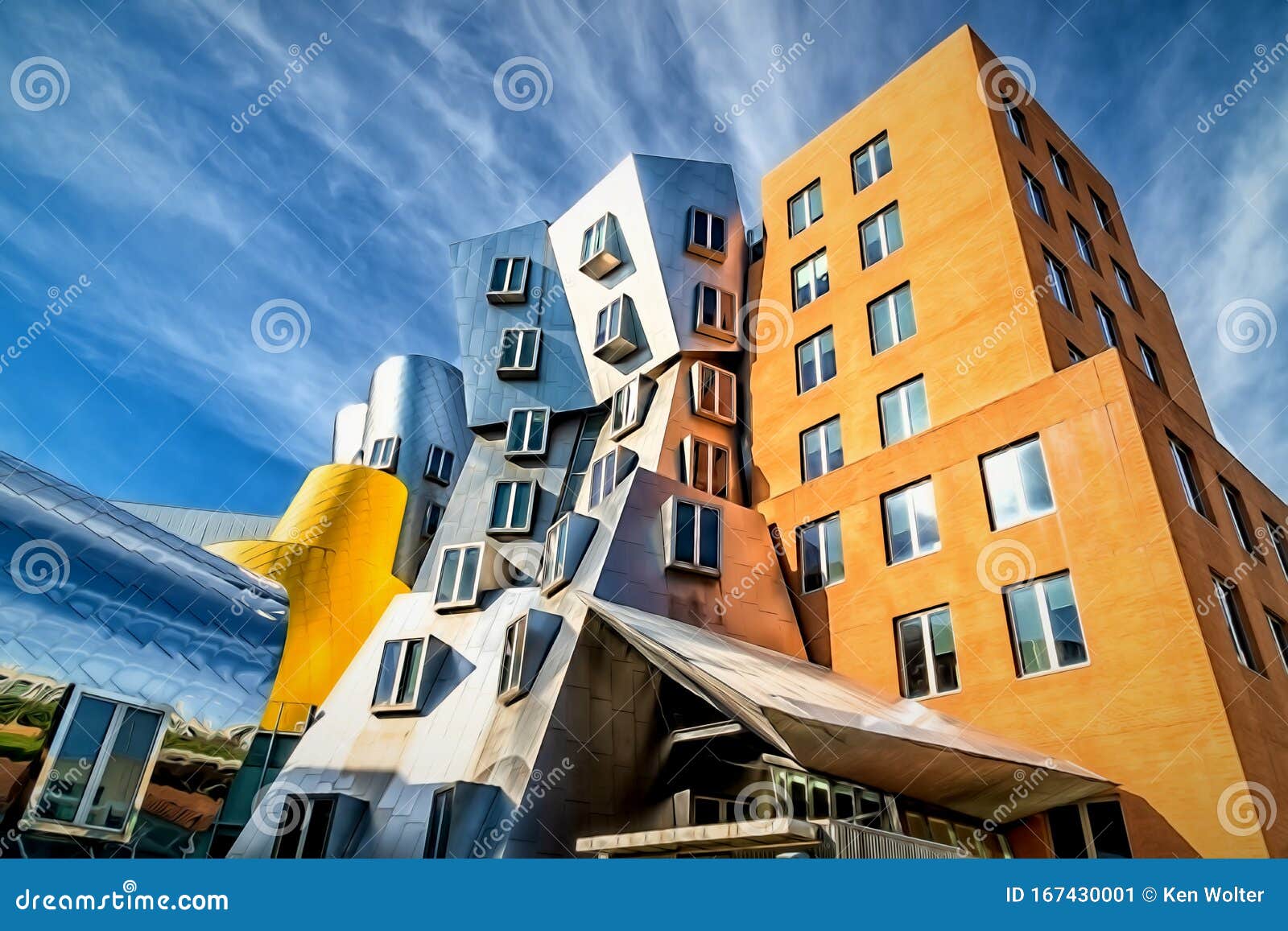Stata Center: A Cambridge Landmark

Nestled in the heart of Cambridge, Massachusetts, the Stata Center stands as a unique and captivating landmark that has captivated locals and visitors alike since its completion in 2004. Designed by renowned architect Frank Gehry, this innovative building is a testament to the fusion of cutting-edge technology and architectural brilliance. With its distinctive appearance and role as a hub for computer science and engineering at the Massachusetts Institute of Technology (MIT), the Stata Center has become an iconic symbol of the city’s rich intellectual heritage.
The Stata Center’s exterior is a visual spectacle, characterized by its undulating metal panels, vibrant colors, and unconventional shapes. Gehry’s signature style, often described as deconstructivist, is fully embraced in this structure, challenging traditional architectural norms. The building’s form seems to defy gravity, with its curves and angles creating a dynamic and ever-changing silhouette against the Cambridge skyline. This bold design choice has sparked controversy and admiration, reflecting the complex relationship between art and functionality in modern architecture.
The interior of the Stata Center is no less impressive, featuring a maze-like layout that encourages exploration and serendipitous encounters. The spaces within the building are designed to foster collaboration and innovation, with open areas for interaction and study. The use of natural light, bright colors, and unique architectural features creates an inspiring environment for students and researchers alike. The center houses state-of-the-art laboratories, classrooms, and offices, providing an ideal setting for the pursuit of advanced knowledge in computer science and engineering.
The Stata Center is a physical manifestation of the spirit of innovation and creativity that MIT represents. It serves as a daily reminder to its occupants and visitors that boundaries are meant to be pushed and conventions can be reimagined.
One of the most striking features of the Stata Center is its central courtyard, which brings a sense of tranquility and openness to the heart of the building. Surrounded by the unique architectural elements, this courtyard provides a respite from the bustling academic environment, offering a place for relaxation, reflection, and informal gatherings. The interplay of light and shadow created by the building’s design adds to the visual appeal and makes the courtyard a favorite spot for students and faculty.
Beyond its aesthetic and functional aspects, the Stata Center has played a pivotal role in advancing the fields of computer science and engineering. The building’s design facilitates interdisciplinary collaboration, bringing together researchers from diverse backgrounds to tackle complex problems. The center has been instrumental in fostering groundbreaking research and development, contributing significantly to MIT’s reputation as a global leader in technological innovation.
As a landmark in Cambridge, the Stata Center has become an integral part of the city’s cultural and educational fabric. Its distinctive appearance and role as a hub for technological innovation have made it a popular destination for tourists and a source of pride for the MIT community. The center’s impact extends beyond its physical presence, influencing architectural trends and inspiring future generations of engineers and computer scientists.
In conclusion, the Stata Center is more than just a building; it is a symbol of the fusion of art and science, of creativity and innovation. Its design challenges conventional norms, reflecting the dynamic and evolving nature of the fields it houses. As a landmark, it stands as a beacon of progress and a testament to the enduring legacy of MIT.
Who designed the Stata Center, and what architectural style did they embrace?
+The Stata Center was designed by Frank Gehry, a renowned architect known for his deconstructivist style. This style, characterized by non-rectilinear shapes and unconventional forms, is fully embraced in the design of the Stata Center, making it a unique and iconic structure.
What is the significance of the Stata Center’s design and its impact on MIT’s reputation?
+The Stata Center’s design, with its bold and innovative features, reflects MIT’s commitment to pushing boundaries in both technology and architectural design. It has become an iconic symbol of MIT’s reputation as a global leader in technological innovation and a hub for cutting-edge research.
How does the Stata Center’s interior layout encourage collaboration and innovation?
+The interior of the Stata Center is designed with an open, maze-like layout, fostering serendipitous encounters and collaboration. The unique spaces and natural light encourage interaction and creativity, providing an ideal environment for interdisciplinary research and innovation.
What is the role of the Stata Center’s central courtyard, and how does it contribute to the overall experience of the building?
+The central courtyard in the Stata Center provides a peaceful and open space at the heart of the building. It offers a place for relaxation, informal gatherings, and a respite from the busy academic environment. The interplay of light and shadow created by the surrounding architecture adds to the courtyard’s visual appeal and makes it a popular spot for students and faculty.


